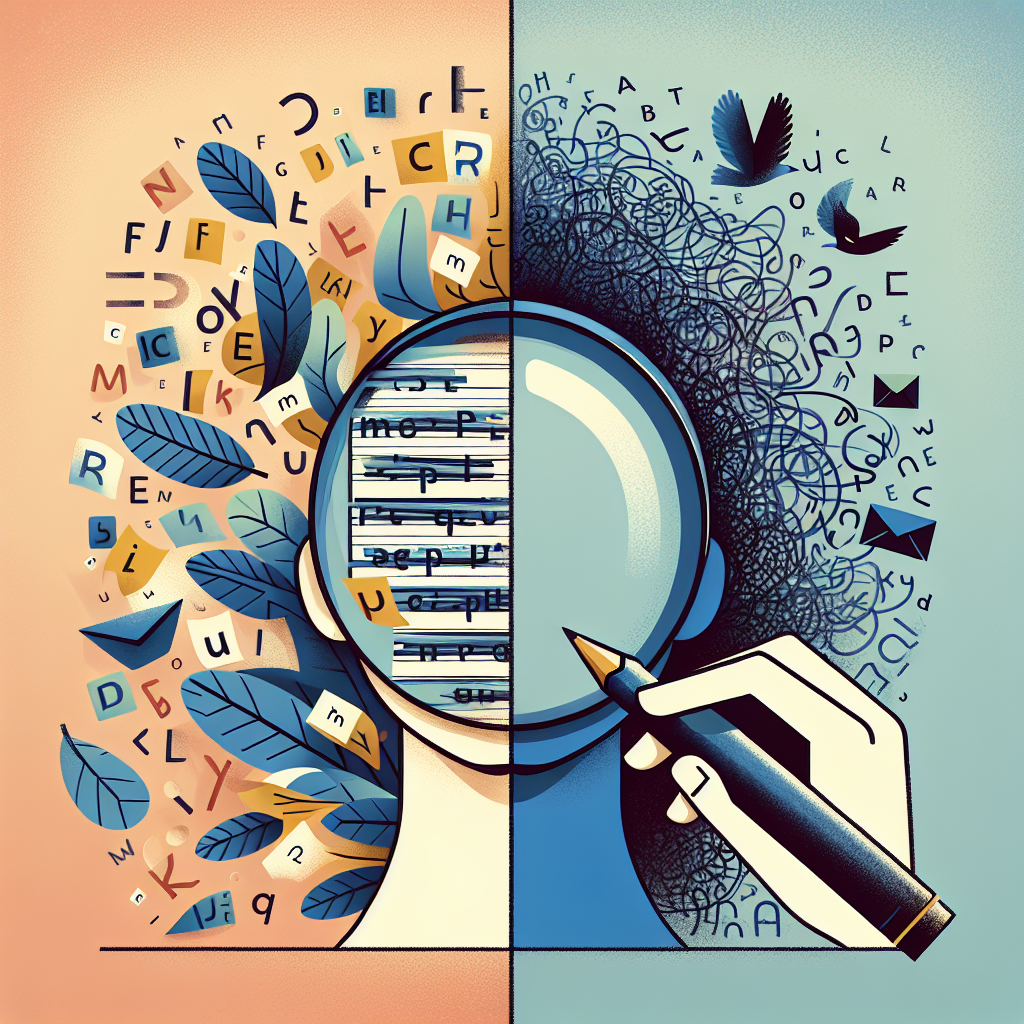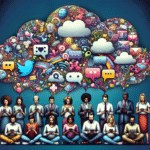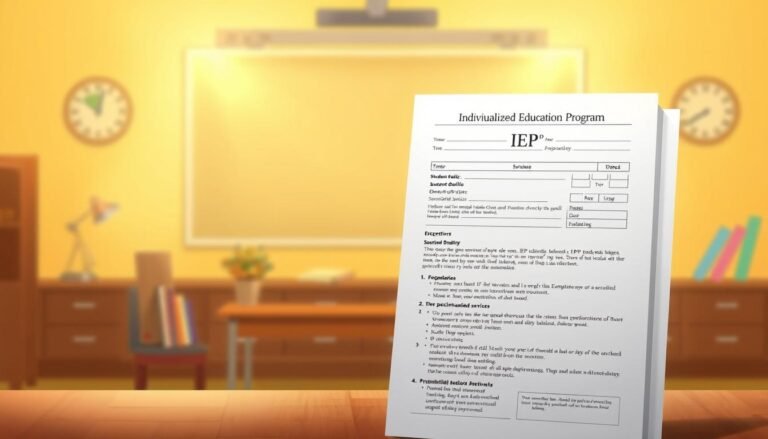
Beyond Reading: Unveiling the Distinct Characteristics of Dyslexia and Dysgraphia
Introduction
Imagine struggling to express your thoughts on paper, despite having brilliant ideas swirling in your mind. Or picture feeling overwhelmed in a classroom, not because the subject matter is complex, but because the letters on the page seem to dance before your eyes. These scenarios are all too familiar for individuals grappling with dyslexia and dysgraphia. In our exploration titled Beyond Reading: Exploring the Distinct Characteristics of Dyslexia and Dysgraphia, we delve into the multifaceted nature of these two learning differences, highlighting their distinct characteristics, their real-world impacts, and the strategies to effectively support those who experience them.
Understanding Dyslexia and Dysgraphia
Defining Dyslexia
Dyslexia, a common learning disability, primarily affects reading capabilities. It manifests as difficulties in word recognition, decoding, and spelling, despite adequate intelligence and education. However, dyslexia is not just limited to reading; it also influences various aspects of language comprehension and processing.
Defining Dysgraphia
Contrarily, dysgraphia is specifically related to writing. It impairs the ability to translate thoughts into written form. Individuals with dysgraphia may struggle with spelling, handwriting, and organizing their thoughts on paper. While dysgraphia primarily affects written expression, it may also influence other cognitive skills, such as fine motor coordination.
Key Differences
| Feature | Dyslexia | Dysgraphia |
|---|---|---|
| Affects | Reading comprehension | Writing skills |
| Cognitive Process | Word recognition and decoding | Motor coordination and thought organization |
| Common Symptoms | Difficulty reading fluently | Struggles with handwriting and spelling |
| Impact on Learning | Challenges in reading assignments | Difficulty in expressing ideas through writing |
An In-Depth Look at Dyslexia
Characteristics of Dyslexia
Understanding the unique traits of dyslexia involves more than recognizing poor reading skills. Factors such as phonological awareness, memory issues, and processing speed come into play.
Phonological Awareness
One hallmark of dyslexia is difficulty with phonological awareness, which is the ability to recognize and manipulate sounds in spoken words. This can hinder reading fluency and accuracy.
Visual and Auditory Processing
Individuals often struggle with auditory processing, impacting their ability to follow spoken instructions. Additionally, many report visual disorientation when reading, which can make letters appear jumbled.
Real-Life Case Study: Sarah’s Story
Sarah, a 10-year-old, loves storytelling but despises reading assignments. Diagnosed with dyslexia, her journey reveals the struggles of processing letters and sounds. Despite her outstanding creative abilities, Sarah’s reading difficulties affected her confidence. With intensive phonics training and a reading tutor, she learned techniques to improve her reading skills. Her story exemplifies the essence of Beyond Reading: Exploring the Distinct Characteristics of Dyslexia and Dysgraphia, showcasing how targeted interventions can transform lives.
Diving into Dysgraphia
Characteristics of Dysgraphia
Much like dyslexia, dysgraphia entails a unique set of challenges. It primarily impacts an individual’s ability to write clearly and coherently.
Poor Handwriting and Spelling
Individuals often have irregular handwriting, which can be difficult to read. Moreover, spelling challenges are common, leading to frequent mistakes even in simple words.
Organizational Issues
The integration of thoughts into written form can be a monumental challenge, making essays and written communication a labor-intensive process.
Real-Life Case Study: Jake’s Experience
Jake, a high school freshman, excels in mathematics but struggles significantly with written assignments. His dysgraphia makes it challenging to convey his ideas clearly. That’s when his school implemented assistive technology, encouraging the use of speech-to-text applications. Jake was able to express his thoughts without the interference of manual writing difficulties. This positive adjustment demonstrates the need for understanding and support, reflecting our theme of Beyond Reading: Exploring the Distinct Characteristics of Dyslexia and Dysgraphia.
The Intersection of Dyslexia and Dysgraphia
Co-Occurrence and Implications
Research indicates a significant overlap between dyslexia and dysgraphia, with many individuals experiencing both conditions simultaneously. This intersection complicates educational strategies and requires a more nuanced approach to support.
Classroom Strategies
- Multi-Sensory Learning: Incorporating various sensory pathways for learning can substantially benefit both dyslexic and dysgraphic students. For example, using tactile learning tools and auditory feedback can enhance comprehension and retention.
- Assistive Technologies: Tools such as text-to-speech and graphic organizers play a crucial role in fostering written expression and reading comprehension.
- Flexible Assessments: Adapting assessment methods allows students to demonstrate their knowledge without being penalized for their learning differences.
| Strategy | Beneficial For | Implementation |
|---|---|---|
| Multi-Sensory Learning | Both dyslexia and dysgraphia | Incorporate hands-on activities alongside reading and writing tasks |
| Assistive Technologies | Improves writing and reading | Use computers and tablets with relevant software |
| Flexible Assessments | Reduces anxiety and enhances learning | Provide options like oral presentations or visual projects |
Supporting Individuals with Dyslexia and Dysgraphia
Parental Involvement
Parents play a critical role in advocating for their children’s needs. Open communication with educators, understanding individual challenges, and seeking tailored support services can empower students.
Teacher Training and Awareness
Effective teacher training programs are essential in equipping educators with the tools to identify and support students with dyslexia and dysgraphia. Awareness of distinct characteristics ensures that students receive the right accommodations to succeed academically.
Conclusion
Dyslexia and dysgraphia are not mere labels; they represent unique learning profiles with distinct challenges and strengths. By diving Beyond Reading: Exploring the Distinct Characteristics of Dyslexia and Dysgraphia, we uncover the profound impact these learning differences can have on individuals and their educational journeys. Understanding these conditions fosters empathy, effective support systems, and ultimately enables success for those affected.
For stakeholders—from teachers to parents and peers—recognizing the distinct characteristics of each condition is crucial. By doing so, we not only advocate for those who struggle but also celebrate the diverse ways in which individuals can express themselves and thrive.
FAQs
1. What is the primary difference between dyslexia and dysgraphia?
Dyslexia primarily affects reading and language processing, while dysgraphia mainly impacts writing and the motor skills involved in writing.
2. Can a child have both dyslexia and dysgraphia?
Yes, many children experience both conditions, making support and intervention strategies more complex.
3. What are some common treatments or interventions?
Common interventions include specialized tutoring, multi-sensory teaching techniques, and the use of assistive technologies.
4. How can parents support a child with dyslexia or dysgraphia at home?
Parents can read aloud with their children, use educational games, and help establish a distraction-free homework environment to support learning.
5. Are there any specific learning materials designed for these conditions?
Yes, there are many resources available, including phonics-based reading programs for dyslexia and graphomotor therapy tools for dysgraphia.
6. How can schools better accommodate students with these learning differences?
Schools can implement individualized education plans (IEPs), use differentiated instruction methods, and provide access to technology that supports learning.
By understanding and embracing the nuances of dyslexia and dysgraphia, we lay down a path toward inclusivity, empathy, and enhanced educational experiences for all learners.
















